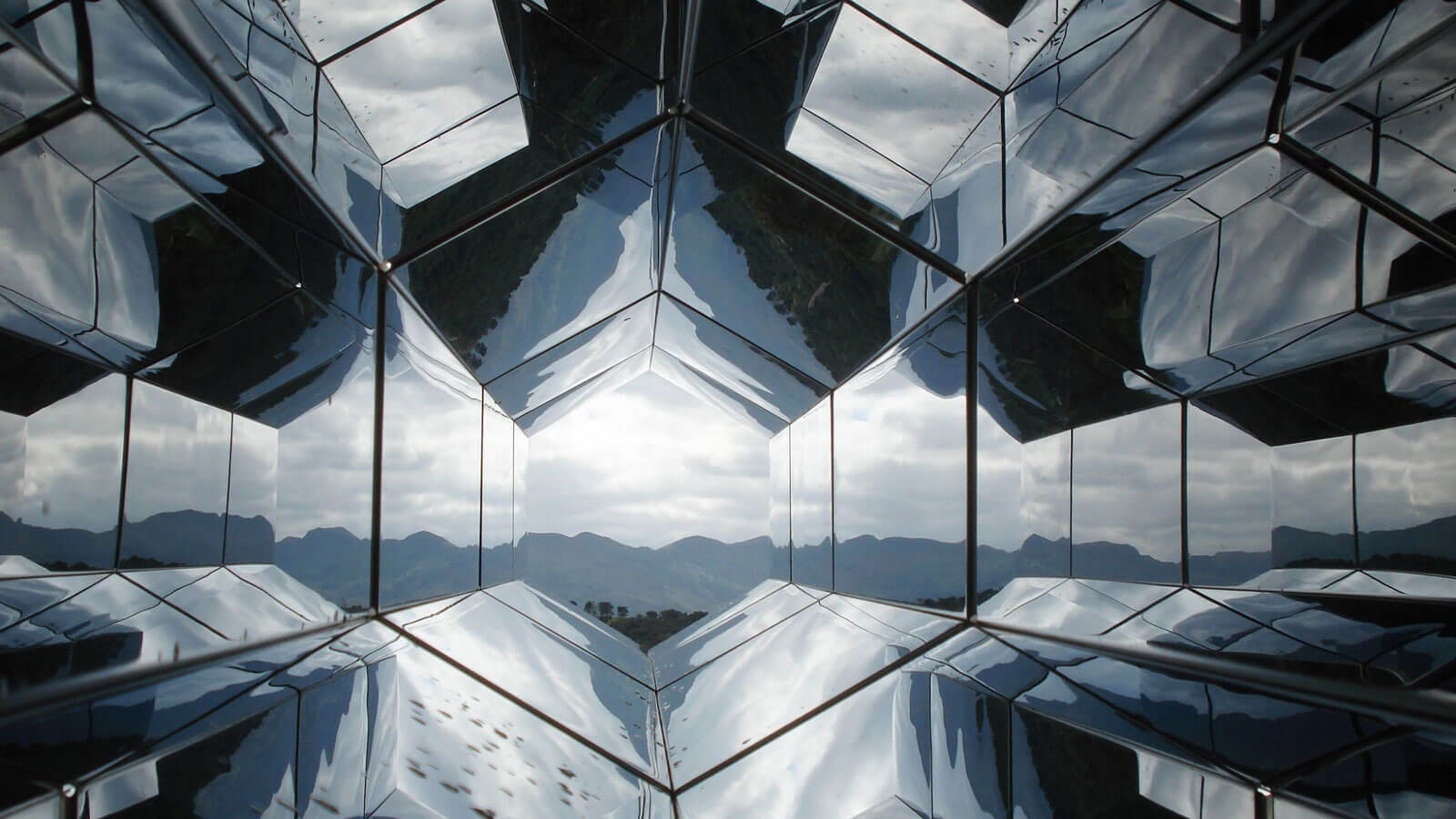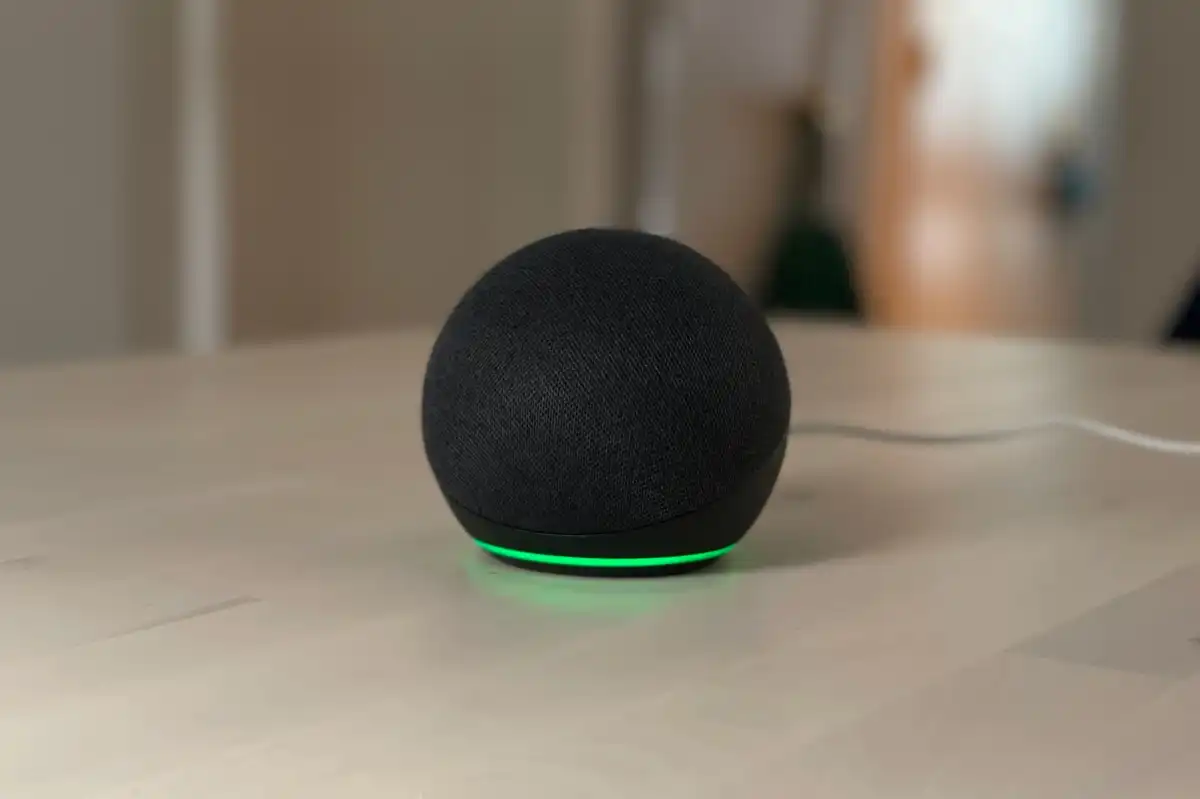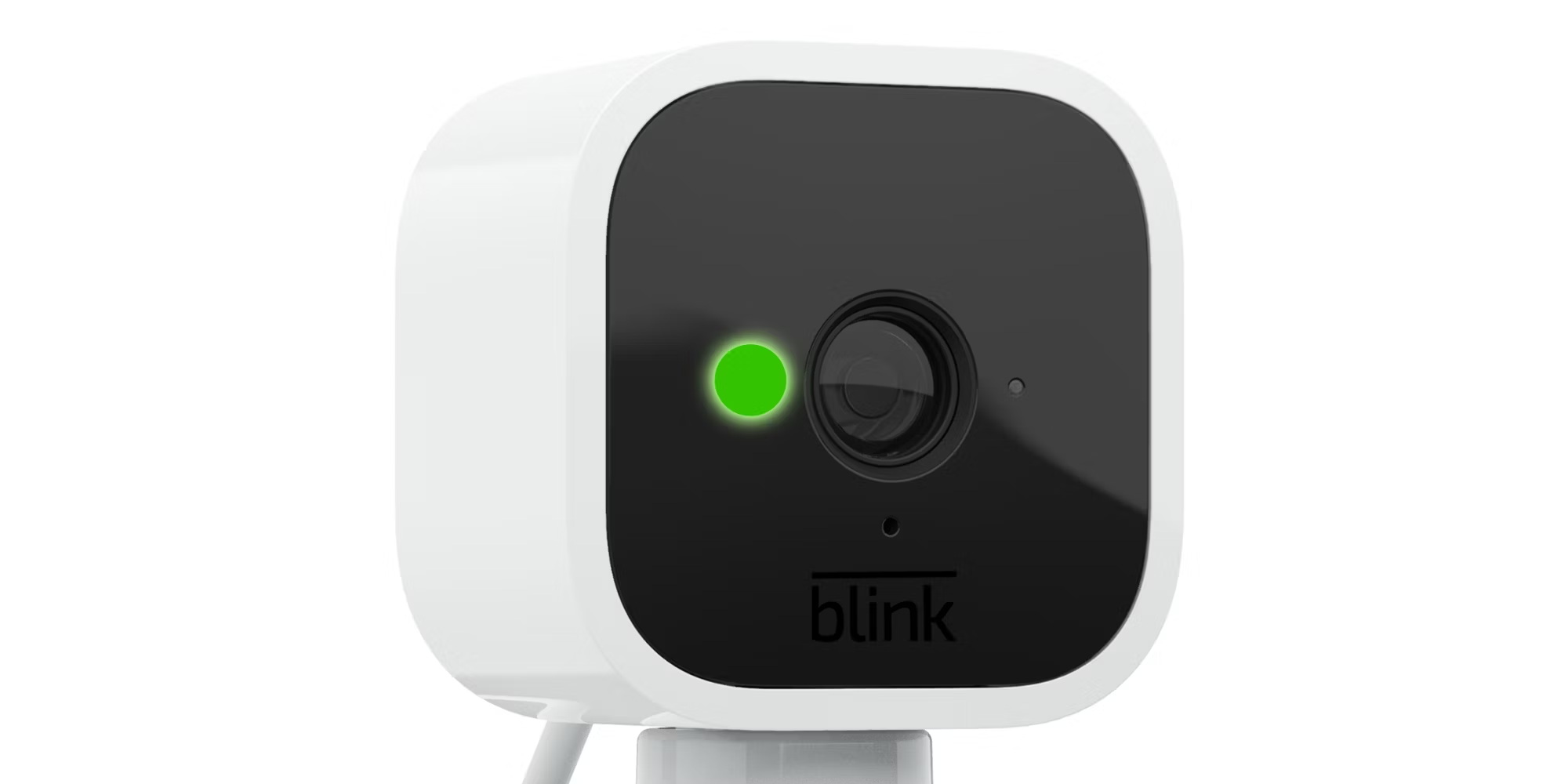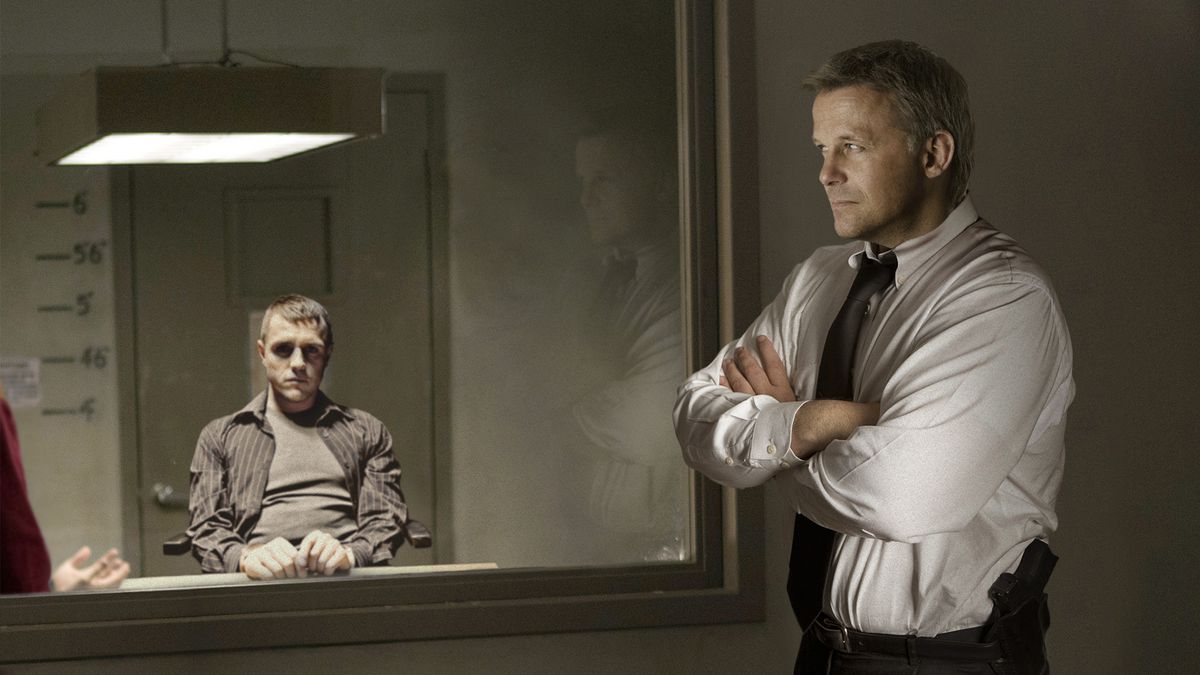Home>Articles>What Does It Mean When Two Mirrors Face Each Other


Articles
What Does It Mean When Two Mirrors Face Each Other
Modified: January 5, 2024
Explore the fascinating phenomenon of two mirrors facing each other. Gain insight into the symbolism and meaning behind this intriguing optical illusion. Read more in our articles.
(Many of the links in this article redirect to a specific reviewed product. Your purchase of these products through affiliate links helps to generate commission for Storables.com, at no extra cost. Learn more)
Introduction
Have you ever wondered what happens when you place two mirrors facing each other? It’s a captivating visual phenomenon that seems to create an infinite regression of reflections. It’s a simple yet intriguing scenario that sparks curiosity and often leaves us questioning the nature of perception and reality.
In this article, we’ll explore the physics behind the reflection of light, the fascinating concept of two mirrors facing each other, and the optical illusions and symbolism associated with this phenomenon.
So, let’s dive into the world of mirrors and discover what it means when two mirrors face each other.
Key Takeaways:
- The phenomenon of two mirrors facing each other creates an infinite regression of reflections, challenging our perception and prompting contemplation about the interconnectedness of the universe.
- When two mirrors face each other, they not only create mesmerizing optical illusions but also symbolize concepts such as infinity, self-reflection, and interconnectedness, transcending geographical and cultural boundaries.
The Physics of Reflection
To understand what happens when two mirrors face each other, we first need to grasp the concept of reflection. Reflection is the bouncing back of light when it encounters a surface. This phenomenon occurs due to the interaction between light waves and the molecules of the reflecting surface.
When light strikes a surface, it is either absorbed, transmitted through the material, or reflected. In the case of mirrors, they have a smooth and highly reflective surface that allows for a significant amount of light to be reflected.
The angle at which light strikes a surface is called the angle of incidence. According to the law of reflection, the angle of incidence is equal to the angle of reflection. This means that the incoming light ray and the reflected light ray form equal angles with the normal, an imaginary line perpendicular to the surface.
The reflection in mirrors is known as specular reflection, where the light rays bounce off the surface in a regular and predictable manner. This results in a clear and precise reflection of the objects in front of the mirror.
Now that we have a basic understanding of the physics of reflection, let’s explore what happens when two mirrors face each other.
Reflection in Plane Mirrors
Plane mirrors are flat mirrors with a smooth and reflective surface. When an object is placed in front of a plane mirror, the light rays emitted from the object hit the mirror’s surface and undergo reflection.
The reflected light rays form an image behind the mirror, known as the virtual image. This virtual image appears to be the same distance behind the mirror as the object is in front of it. However, it is important to note that the virtual image cannot be projected onto a screen or captured on a surface.
When two plane mirrors are placed facing each other, an interesting phenomenon occurs. The light rays emitted from an object in front of the first mirror undergo reflection and form a virtual image behind the mirror. This virtual image then serves as the object for the second mirror. The second mirror reflects the light rays, creating another virtual image behind it.
The process continues, with each mirror reflecting the image created by the previous mirror. The result is an infinite regression of virtual images stretching into the distance, creating a mesmerizing effect.
It is important to note that the images formed by the mirrors are not distorted or altered in any way. Each mirror reflects the image with precision, maintaining its size and shape. The infinite regression of reflections simply gives the illusion of multiple copies of the object receding into the distance.
This phenomenon is not limited to physical mirrors; it can also occur in other reflective surfaces, such as windows or polished metal objects.
Now that we understand the concept of reflection in plane mirrors, let’s explore the optical illusions and depth perception associated with two mirrors facing each other.
Infinite Regression: Two Mirrors Facing Each Other
When two mirrors are placed facing each other, they create what is known as an infinite regression. This mesmerizing visual effect occurs as each mirror reflects the image created by the other mirror, leading to a seemingly endless series of reflections.
This infinite regression can be witnessed by positioning oneself between the two mirrors and looking into the reflection. The reflections seem to stretch out into the distance, giving the impression of an infinite tunnel or hallway.
One fascinating aspect of this phenomenon is that the reflections can become progressively smaller and blurrier with each iteration due to the slight imperfections in the mirrors. These imperfections cause some light to be absorbed or scattered, leading to a reduction in the intensity and clarity of each subsequent reflection.
Interestingly, if the mirrors were perfectly reflective and there were no imperfections, the infinite regression would continue infinitely, with each reflection becoming smaller but maintaining the same level of clarity as the original object. However, in reality, the imperfections limit the number of reflections that are visible.
The precise number of reflections that can be observed depends on factors such as the distance between the mirrors, the angle at which they are positioned, and the quality of the mirrors’ surfaces.
This optical illusion created by two mirrors facing each other not only captivates our imagination but also raises intriguing questions about perception and the nature of reality. It challenges our intuitive understanding of spatial relationships and invites us to ponder the concept of infinity.
Now that we have explored the concept of infinite regression, let’s delve into the optical illusions and depth perception associated with this intriguing phenomenon.
Optical Illusions and Depth Perception
When two mirrors face each other, they create a unique optical illusion that can play tricks on our depth perception. The infinite regression of reflections can make it challenging to perceive the true spatial relationships between objects and their reflections.
Our brains rely on depth cues to interpret the three-dimensional world around us. These cues include perspective, shadows, and relative size. However, when confronted with the infinite reflections in a mirror, these depth cues become distorted and can lead to perceptual ambiguities.
One such optical illusion is the apparent enlargement or diminishment of objects. As the reflections in the mirrors stretch out into the distance, the perception of size can be altered. Objects positioned closer to the mirrors may appear larger, while those further back may appear smaller. This distortion in size perception can create a surreal and intriguing visual experience.
Another fascinating aspect of this optical illusion is the illusion of apparent movement. As we move our gaze within the reflection, it can give the impression of objects shifting or gliding in space. This perceptual phenomenon is a result of our brain’s attempt to make sense of the continuous stream of reflections and their changing perspective as we move.
Moreover, the infinite regression of reflections can also give the illusion of depth. It creates the perception of a hallway or tunnel receding into the distance, even though it is a visual construct and does not actually exist beyond the reflections.
It’s important to note that the effects of these optical illusions can vary depending on the distance between the mirrors, the angle at which they are positioned, and the viewer’s perspective. Experimenting with different setups can yield different visual experiences and enhance the sense of wonder associated with these illusions.
Now that we have explored the optical illusions and depth perception involved, let’s dive into some real-life examples where we encounter infinity reflections.
When two mirrors face each other, it creates a visual effect known as an infinity mirror. This occurs due to the reflection of light bouncing back and forth between the two mirrors, creating the illusion of an endless tunnel of reflections.
Multiple Images in Infinity
When two mirrors face each other, the phenomenon of multiple images in infinity occurs. This creates a captivating visual effect where a single object is reflected multiple times, stretching into the distance and creating an illusion of an infinite number of copies.
The number of visible reflections depends on various factors, including the angle at which the mirrors are positioned and the quality of their surfaces. With each reflection, the image of the object becomes smaller and may lose clarity due to imperfections in the mirrors. However, the effect can still be mesmerizing, especially when combined with the optical illusions mentioned earlier.
One interesting aspect of multiple images in infinity is how they can create a sense of depth and dimensionality. The receding reflections give the impression of an infinite space, as if the copies of the object are extending infinitely into the distance. This effect can be especially striking when observed from different angles or viewpoints.
In addition to the perception of depth, multiple images in infinity also emphasize the interconnectedness of objects and their reflections. Each reflection is connected to the next, forming a seamless chain that repeats indefinitely. It serves as a reminder of the infinite possibilities and interconnected nature of the world around us.
Multiple images in infinity can be found in various settings, from art installations that purposefully incorporate mirrors to create breathtaking visual effects, to everyday situations where reflective surfaces reflect each other. Whether it’s a hallway lined with mirrors, a room with mirrored walls, or even a pair of sunglasses reflecting the surroundings, the occurrence of multiple images in infinity can spark a sense of wonder and fascination.
Now that we have explored the concept of multiple images in infinity, let’s delve into some real-life examples where we commonly encounter this phenomenon.
Real-Life Examples of Infinity Reflection
The phenomenon of infinity reflection can be observed in various real-life scenarios, often captivating and intriguing us with its mesmerizing visual effect. Here are a few examples where we commonly encounter this phenomenon:
- Infinite Mirrored Hallways: Art installations or architectural designs sometimes include long corridors lined with mirrors on both sides. As you walk along these mirrored hallways, the infinite reflections create a stunning visual experience, with the sense of depth and an illusion of an endless space.
- Infinity Rooms: Japanese artist Yayoi Kusama’s immersive installations, known as “Infinity Rooms,” employ mirrors and LED lights to create the illusion of limitless space. These rooms offer a unique and mesmerizing experience, where visitors find themselves surrounded by infinite reflections of themselves and the lights.
- Infinite Mirrors in Nightclubs: Nightclubs frequently use mirrored walls to create an illusion of a larger space and an energetic atmosphere. The multiple reflections of lights, people, and the dancefloor can give the impression of a never-ending party, adding to the vibrant ambiance.
- Mirror Mazes and Funhouses: Mirror mazes or funhouses challenge visitors to find their way through a labyrinth of mirrors. These mazes play with perception and create an exhilarating experience filled with infinite reflections, confusing pathways, and optical illusions.
- Unending Reflections in Jewelry Stores: Jewelry stores often employ strategically placed mirrors to display their various pieces. These mirrors create the illusion that the jewelry extends beyond what is physically present and provides a sense of abundance and elegance.
- Mirrored Elevators: In some modern buildings, elevators are enclosed in mirrored walls, offering passengers a unique experience as the mirrors reflect each other. This can give the illusion of an elevator extending infinitely in both directions, creating an interesting visual effect during the brief ride.
These are just a few examples of where we commonly encounter the phenomenon of infinity reflection in our daily lives. These instances serve as a reminder of the intriguing interplay between perception, reality, and the power of reflections.
Now that we have explored some real-life examples, let’s take a moment to delve into the symbolism and cultural significance associated with two mirrors facing each other.
Symbolism and Cultural Significance
The phenomenon of two mirrors facing each other holds symbolism and cultural significance across various contexts. In many cultures and belief systems, it is associated with deeper meanings and represents concepts such as infinity, self-reflection, and interconnectedness.
Infinity: The infinite regression of reflections created by two mirrors facing each other is often seen as a symbol of infinity. The seemingly never-ending series of reflections evokes a sense of boundlessness, reminding us of the infinite possibilities and interconnected nature of the universe.
Self-Reflection: Two mirrors facing each other can be seen as a metaphor for self-reflection and introspection. The act of looking at oneself in the reflection and seeing it repeat infinitely can prompt contemplation and a deeper understanding of one’s identity, thoughts, and emotions.
Interconnectedness: The multiple reflections in infinity represent the interconnectedness of all things. Just as each reflection is connected to the next, we are connected to each other and the world around us in intricate and profound ways. This symbolism can serve as a reminder of our shared humanity and the importance of empathy and understanding.
The symbolism and cultural significance associated with two mirrors facing each other transcend geographical boundaries and can be found in various traditions and belief systems throughout history. From ancient philosophies to contemporary art, the concept of two mirrors reflecting each other has been explored and interpreted in different ways.
For example, in Chinese culture, mirrors have long been associated with spiritual and metaphysical beliefs. The reflective surface of a mirror is considered a gateway between the physical and spiritual realms. Placing two mirrors facing each other, known as a “mirror gate,” is believed to open the pathway for energy and auspicious blessings to flow between the realms.
In art, mirrors facing each other have been used as a metaphor for infinite perception and the idea that reality is a continuous reflection of our thoughts and experiences. Artists like M.C. Escher have incorporated the concept of infinity reflection in their works, challenging our perception and inviting us to contemplate the nature of existence.
Overall, the symbolism and cultural significance of two mirrors facing each other offer a profound reflection on the human experience, encouraging us to explore our interconnectedness, engage in self-reflection, and contemplate the infinite possibilities that lie within and around us.
As we conclude our exploration of the phenomenon of two mirrors facing each other, we are reminded of the fascinating blend of science, perception, and symbolism that this simple yet captivating scenario embodies.
Thank you for joining us on this journey into the world of mirrors and reflection. May it inspire you to see the beauty and depth within yourself and the world around you.
Conclusion
The phenomenon of two mirrors facing each other is an intriguing visual spectacle that combines the principles of physics, the intricacies of perception, and the symbolism of infinite reflection. Through this article, we have explored the physics of reflection, the concept of infinite regression, the optical illusions it creates, and the cultural significance attached to it.
We have learned that reflection occurs when light interacts with a surface, and mirrors provide a smooth and highly reflective surface for this phenomenon to take place. When two mirrors face each other, they create an infinite regression of reflections that seems to stretch into the distance, captivating our imagination and challenging our perception of reality.
Alongside the visual aesthetics, the infinite regression of reflections gives rise to optical illusions, such as changes in size, apparent movement, and a sense of depth. These illusions can play tricks on our depth perception, creating a surreal and captivating experience as we observe the interplay of images.
Furthermore, two mirrors facing each other hold symbolism and cultural significance. They represent concepts like infinity, self-reflection, and interconnectedness. The visual experience of the endless reflections prompts contemplation about the infinite nature of the universe, encourages introspection and self-discovery, and reminds us of our interconnected existence.
Through real-life examples in art installations, architecture, and everyday situations, we have seen how the phenomenon of infinity reflection manifests in various contexts, captivating and inspiring us in diverse ways.
In conclusion, the phenomenon of two mirrors facing each other offers a captivating blend of science, perception, and symbolism. It invites us to explore the intricate workings of light, question our understanding of depth and reality, and contemplate the depths of our own being. It serves as a powerful reminder of the vastness and interconnectedness of the world we inhabit.
So, the next time you encounter two mirrors facing each other, take a moment to appreciate the mesmerizing visual effect, delve into the illusions it creates, and embrace the symbolism and cultural significance it holds. Let it serve as a gateway into a world of infinite possibilities, where reflection becomes a pathway to self-discovery and connectedness.
Frequently Asked Questions about What Does It Mean When Two Mirrors Face Each Other
Was this page helpful?
At Storables.com, we guarantee accurate and reliable information. Our content, validated by Expert Board Contributors, is crafted following stringent Editorial Policies. We're committed to providing you with well-researched, expert-backed insights for all your informational needs.















0 thoughts on “What Does It Mean When Two Mirrors Face Each Other”